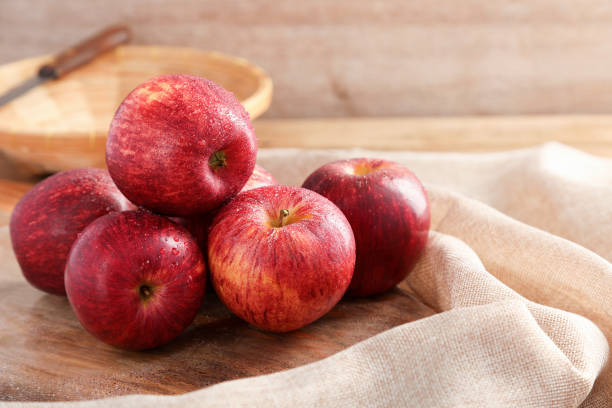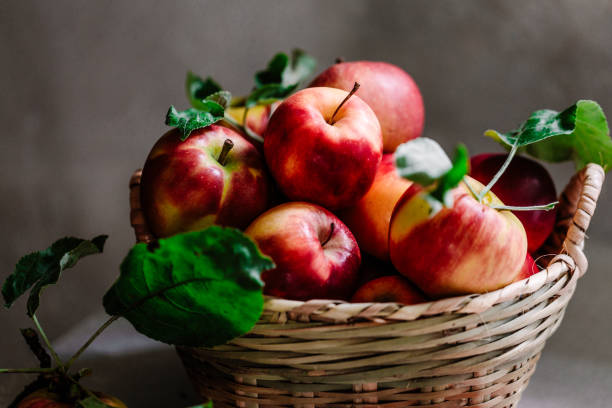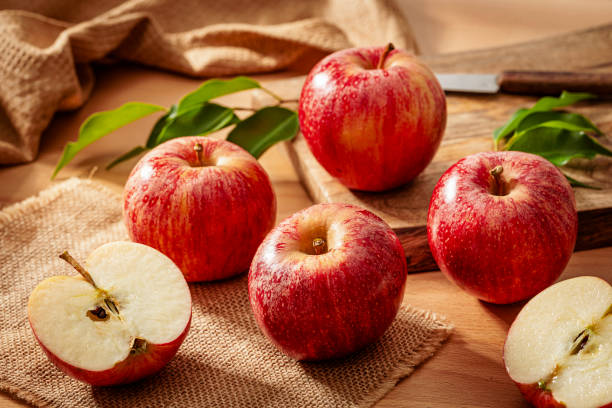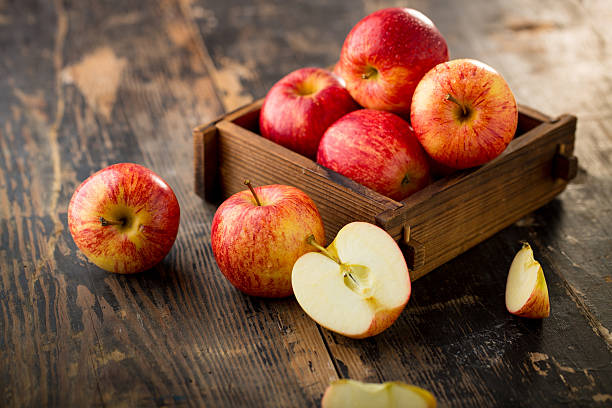Keeping your blood sugar levels in a healthy range is important for everyone—especially if you have diabetes or prediabetes. There are many ways to manage blood sugar, but what you eat makes a big difference. One easy, natural option? Apples.
They are more than just a tasty and popular fruit. They’re packed with fiber, water, and antioxidants. This mix helps slow down digestion and may prevent blood sugar spikes, making it a smart snack for blood sugar control. In this post, we’ll look at how apples may help lower blood sugar, the health benefits they offer, and simple ways to enjoy them every day.
Why Blood Sugar Management Matters
Before we dive into the benefits of apples, let’s take a moment to understand blood sugar.
Blood sugar, also known as blood glucose, is the main type of sugar in your blood. It comes from the foods you eat and gives your body the energy it needs to work, think, and stay active. But when blood sugar levels stay too high over time, it can lead to serious health issues like type 2 diabetes, heart disease, and nerve damage.
That’s why it’s so important to keep your blood sugar levels steady. One of the best ways to do this is by eating the right kinds of foods—especially those that help manage blood sugar naturally.

Are Apples Good for Blood Sugar Levels?
Yes—they can be a smart and healthy choice for people with diabetes or anyone looking to keep their blood sugar in check. Here’s what makes them a great option:
Low Glycemic Index (GI): They have a low GI, which means they cause a slow, steady rise in blood sugar instead of a quick spike. This helps avoid sudden highs and lows.
High in Fiber: A medium apple contains around 4 grams of fiber, especially in the skin. Fiber helps slow down digestion and the absorption of sugar, which can help with blood sugar control.
Packed with Antioxidants: They are rich in antioxidants, including flavonoids like quercetin. These plant compounds may help lower inflammation and reduce insulin resistance.
The American Diabetes Association recommends whole fruits like apples as a healthy part of a balanced diet—just be sure to enjoy them in moderation and avoid sugary add-ons.
How Apples Help Lower Blood Sugar Levels
Let’s break it down. Here’s how they can help support blood sugar control:
1. Fiber Slows Down Sugar Absorption
They are full of soluble fiber, especially a type called pectin. This kind of fiber forms a gel-like substance in your stomach when mixed with water. It slows down digestion, which helps keep blood sugar levels steady. Because sugar is absorbed into the bloodstream more slowly, it helps prevent sudden spikes after eating.
2. Natural Sugar + Nutrients = Balanced Snack
They have natural sugars, mainly fructose. But unlike processed sugars, the fructose in them comes with fiber, water, and important nutrients. This combination helps your body handle the sugar more slowly and gently. So, they can satisfy your sweet cravings without causing sharp rises in blood sugar levels.
3. They Improve Gut Health
Fiber also helps feed the good bacteria in your gut. These healthy bacteria play a big role in your overall health, including how your body handles blood sugar. A balanced gut can improve insulin sensitivity and help your body use and store sugar more effectively.
4. Low in Calories, High in Water
They are made up of about 85% water, which makes them a filling and hydrating snack. The high water content helps you feel full without adding a lot of calories. Eating low-calorie, water-rich foods like they can help prevent overeating, which may reduce the risk of sudden blood sugar spikes.
What’s the Best Type of Apple for Blood Sugar?
All apples have health benefits, but some varieties may be better for managing blood sugar:
| Apple Type | Taste Profile | Benefits |
|---|---|---|
| Granny Smith | Tart and crisp | Lower in sugar, high in fiber |
| Gala | Sweet and mild | Good fiber, moderate sugar |
| Fuji | Very sweet and juicy | Higher in sugar, still fiber-rich |
| Honeycrisp | Sweet and crunchy | Popular, moderate sugar |
Tip: Choose apples that are less sweet (like Granny Smith) if you’re watching your sugar intake closely.

How to Add Apples to a Blood Sugar-Friendly Diet
You can enjoy them in many tasty and healthy ways! Here are some ideas:
Smart Ways to Eat Apples:
- Eat them whole, with the skin on, to get the most fiber and nutrients.
- Slice and dip in natural nut butter for a tasty, balanced snack.
- Add chopped apples to oatmeal or plain Greek yogurt for extra flavor and fiber.
- Toss apple slices into salads with leafy greens, nuts, and a light vinaigrette.
- Bake apples with a sprinkle of cinnamon for a warm, healthy dessert.
Portion Tips:
- One medium apple has about 25 grams of carbs. To keep blood sugar stable, enjoy just one apple per snack.
- Skip apple juice—it’s missing the fiber and can lead to quick blood sugar spikes.
- Be cautious with dried apples. They’re high in natural sugar and calories, so eat only a small amount at a time.
What Does the Research Say?
Several studies support the idea that they can help regulate blood sugar:
- A 2020 study published in the journal Nutrients discovered that eating them may lower the risk of developing type 2 diabetes. This benefit is linked to the high fiber and polyphenol content in apples. These nutrients work together to improve blood sugar control and reduce inflammation, both of which are important for preventing diabetes.
Read the Study - A study published in The American Journal of Clinical Nutrition found that a higher intake of flavonoids, which are found in apples, is associated with better blood sugar control and reduced insulin resistance. These powerful plant compounds help improve how the body responds to insulin, making it easier to maintain healthy blood sugar levels.
These findings make apples a smart part of any balanced, blood sugar-friendly diet.
Apple Myths: Busted!
Let’s clear up a few common myths about apples and blood sugar.
Myth 1: Apples are too sweet for people with diabetes.
Fact: While apples do contain natural sugars, the fiber they provide helps slow down the absorption of sugar into the bloodstream. This means that apples can be enjoyed in moderation without causing sharp spikes in blood sugar, making them a safe and healthy option for those managing diabetes.
Myth 2: Apple juice is just as good as whole apples.
Fact: That’s not true! Apple juice may seem similar, but it lacks the fiber found in whole apples. Without fiber, the sugar in juice is absorbed more quickly, which can lead to sudden blood sugar spikes. Whole apples, on the other hand, provide fiber that helps slow sugar absorption, making them the healthier choice.
Myth 3: You should peel apples to reduce sugar.
Fact: This is a misconception! The skin of the apple contains most of its fiber and antioxidants, which help regulate blood sugar and improve overall health. By eating the skin, you get the full nutritional benefits of the apple, including better fiber intake and more antioxidants to support your health.
Tips for Buying and Storing Apples
- When shopping for apples, look for firm ones with no soft spots, wrinkles, or bruises. Fresh apples should feel solid and smooth.
- To keep apples fresh for a longer period, store them in the fridge. The cool temperature helps slow down ripening.
- Be sure to wash apples thoroughly before eating to remove any dirt or pesticide residue. If possible, choose organic apples for a pesticide-free option.

Who Should Be Careful with Apples?
While apples are generally safe for most people, there are a few things to keep in mind:
- If you’re following a very low-carb or keto diet, you may need to monitor your apple intake due to their carbohydrate content.
- Individuals who have allergies to birch pollen may experience reactions to apples, as they can trigger cross-reactivity.
- It’s always a good idea to consult with your doctor or dietitian to ensure that they fit well into your personalized diet plan.
Other Fruits That Help with Blood Sugar
In addition to apples, other low-GI fruits that help manage blood sugar include:
- Berries (blueberries, raspberries)
- Pears
- Oranges
- Peaches
- Kiwis
Remember to eat fruit in whole form and pair with protein or healthy fats for even better blood sugar control.
Final Thoughts: Apples and Blood Sugar – A Sweet Deal
Apples are not just delicious; they’re a smart, natural choice for supporting healthy blood sugar levels. With their high fiber, antioxidants, and low glycemic load, it help maintain steady energy levels and keep cravings under control. The fiber slows the absorption of sugar, preventing blood sugar spikes.
When enjoyed in moderation and paired with other nutritious foods, it can be a valuable part of a balanced, blood sugar-friendly diet. Their natural sweetness and health benefits make them an easy and satisfying snack or addition to meals.
Next time you’re at the store, grab a few apples and give your blood sugar a boost the natural way! 🍎

